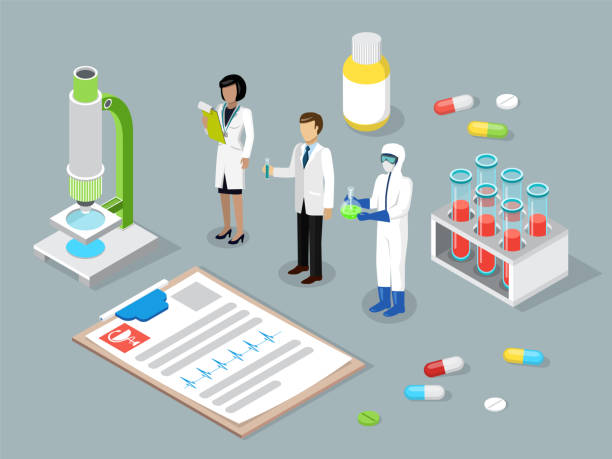Why choose us?
Pharmacovigilance is one of the fastest growing fields in healthcare with a rising demand for professionals trained in drug safety monitoring, risk management and regulatory compliance. Our Resolve Medicode offer industry-aligned training that helps you build knowledge, skills and confidence needed to succeed in this dynamic sector.
In today’s competitive healthcare industry having the right skills is just as important as having the right degree so we offer one of the most respected and job-focused pharmacovigilance training programs, designed to prepare you for global drug safety careers with credibility. Our institute have years of experience in delivering specialized healthcare education and helped many life-science and pharmacy graduates transformed them into working top pharmaceutical companies.
Our Specialized Course Features
Industry-Aligned Curriculum: Our syllabus is structured around global pharmacovigilance standards and covers full spectrum of drug safety responsibilities like signal detection, risk management and regulatory reporting.
Hands-on Software Training: Our candidates gain practical experience using industry-standard pharmacovigilance tools. This hands-on pharmacovigilance training prepares you for real career environment.
Experienced trainer: Learn directly from professionals with experience in pharmaceutical companies. Our faculty guide with real world insight, case-based learning and methods.
Flexible Learning Modes and Duration: We provide 45days training duration in pharmacovigilance course and offer live and recorded classes based on candidate’s need.
Recognized Certification: Earn your recognition worthy pharmacovigilance certificate that validates your skills in pharmacovigilance and also valuable for job applications across pharma.
Placement Assistance: We offer career support for our candidates and provide access to job openings.
Our Course Suitable for
- Graduate in pharmacy, life-science, medicine or allied health
- Exploring career options in pharmacovigilance
- Working professionals in healthcare and pharma industry
- Fresher looking for a skillset in pharma industry
Our Course Structure:
1: Introduction to Pharmacovigilance
Definition and scope of pharmacovigilance (PV)
History and evolution of PV
Objectives and importance in healthcare and drug safety
Key stakeholders: regulatory authorities, MAHs, CROs, HCPs
2: Regulatory Framework and Guidelines
International and national PV regulations
Key regulatory bodies:
FDA (USA)
EMA (Europe)
CDSCO (India)
MHRA (UK)
PMDA (Japan)
ICH Guidelines (E2E, E2D)
GVP (Good Pharmacovigilance Practices)
3: Adverse Drug Reactions (ADRs)
Definition and classification (Type A/B)
Serious vs. non-serious ADRs
Expected vs. unexpected ADRs
Tools for assessing causality (WHO-UMC, Naranjo Algorithm)
4: Individual Case Safety Reports (ICSRs)
Components and structure of an ICSR
Data collection and validation
Narrative writing and case quality
MedDRA and WHO-DD coding
Timelines for expedited reporting
5: Signal Detection and Risk Management
Signal identification, validation, and prioritization
Quantitative and qualitative methods for signal detection
Risk Management Plan (RMP) and Risk Evaluation & Mitigation Strategies (REMS)
Pharmacovigilance Planning (PVP)
6: Aggregate Reporting
Periodic Safety Update Reports (PSUR)
Periodic Benefit-Risk Evaluation Reports (PBRER)
Development Safety Update Reports (DSUR)
Literature screening and review
7: Case Processing and Workflow
Workflow of case receipt to submission
Data entry, triage, duplicate checks
Medical review and quality check (QC)
Electronic submissions (E2B format)
8: Pharmacovigilance Databases and Tools
Overview of global safety databases: Argus, ARISg, VigiBase, etc.
E2B (R3) data standards
Introduction to PV software (manual & electronic data entry)
Coding dictionaries: MedDRA, WHO-DD
9: Clinical Trial Safety
Safety reporting in clinical development (pre-marketing)
SAE reporting timelines and reconciliation
Unblinding in trials for safety evaluation
Sponsor-investigator communications
10: Regulatory Submissions and Inspections
EudraVigilance and FDA FAERS
EMA’s EVMPD, IDMP
Audit readiness and compliance
PV inspection scope and documentation
11: Career Pathways and Professional Ethics
Roles in PV: Case processor, Medical reviewer, QPPV
Interview preparation and resume tips
Career opportunities in pharma, CROs, and KPOs
Ethics and confidentiality in pharmacovigilance
12: Certification & Mock Assessment
Preparation for industry-standard certifications (e.g., DIA, IPHARM, or company-specific)
Mock tests and case study reviews
Final assessment and feedback
Course completion and certification


